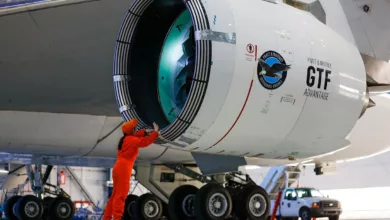bankrupcy
-
Trends

Café coffee day ( CCD) Gets Temporary Respite as Bankruptcy Proceedings Stayed for Now 2023
Café coffee day ( CCD) Gets Temporary Respite as Bankruptcy Proceedings Stayed for Now 2023 The owner of the network…
Read More » -
Trends

Pratt & Whitney Responds After Go First Says Non-Delivery Of Engines Led To Bankruptcy
A US-based aerospace manufacturer, Pratt & Whitney (P&W), has been accused by a financially troubled airline for its bankruptcy declaration…
Read More » -
Trends

Elon Musk Ruthlessly Moves To Clean “Twitter House” And Warns Of Bankruptcy; After Firing 50% Of Twitter Staff
Elon Musk, the new leader, has got Twitter running for cover as the threat of bankruptcy has led to its…
Read More »

